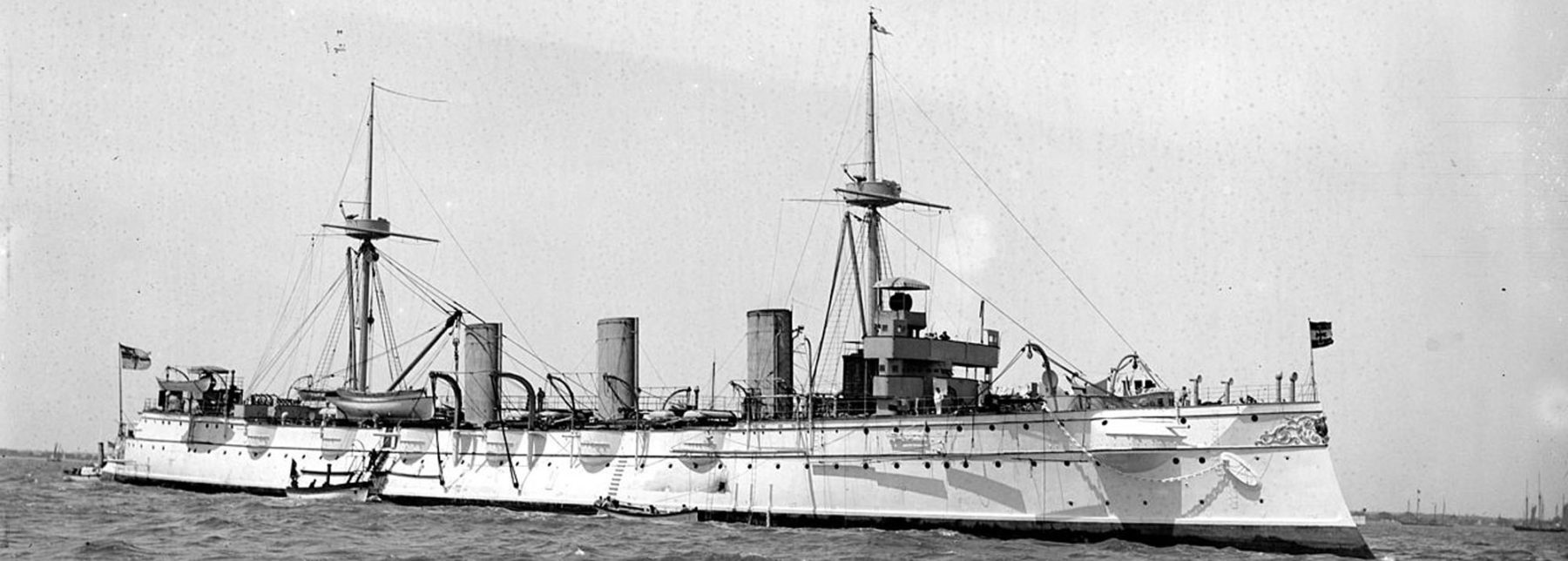
 Germany (1892) – Protected Cruiser 1892-1918
Germany (1892) – Protected Cruiser 1892-1918WW1 German Cruisers
Irene class | SMS Gefion | SMS Hela | SMS Kaiserin Augusta | Victoria Louise class | Prinz Adalbert class | SMS Prinz Heinrich | SMS Fürst Bismarck | Roon class | Scharnhorst class | SMS BlücherBussard class | Gazelle class | Bremen class | Kolberg class | Königsberg class | Nautilus class | Magdeburg class | Dresden class | Graudenz class | Karlsruhe class | Pillau class | Wiesbaden class | Karlsruhe class | Brummer class | Königsberg ii class | Cöln class
The second German protected cruiser:
The design of this wooden-headed protected cruiser started in 1887 based on the Irene class, but with an emphasis on speed, swapping on three shafts. A first time for a German warship and a configuration that was found convenient and repeated on further vessels. Laid down in Germaniawerft in 1890, launched 15 January 1892, and completed in 29 August 1892 this was the largest German cruiser so far at 6,218 tons, she was completed with four 150 mm guns fore and aft, eight on the broadside and eight 88 mm plus four Revolver cannons, five 350 mm torpedo tubes, but protection was rather light. In 1898, she was rearmed with twelve modern 150 mm guns. In 1903, she had another refit, with a larger bridge and new appearance overall. By 1914, she was deemed obsolete and used as a training ship. In 1916, she only had a single 150 mm and four 105 mm, fourteen 88 mm of four different types as a gunnery training ship until 1918, BU 1920.
Development
Design work on SMS Kaiserin Augusta went back to 1887, was completed in 1889 under the Chief of the Kaiserliche Admiralität General Leo von Caprivi, which insisted on a fleet of cruisers to defend German maritime interests abroad. Caprivi like his supporter prince Wilhelm (future emperor), believed the key of their utility was to be powerful, fast vessels able to cope with any emergency situation but with guns of medium caliber for fast firing and light armour for basic protection. The fact they would have also an impressive appearance would also help them to “show the flag” aboard. They were asked to scout for the main battle fleet in case of war (but still training for this from time to time) or patrolling Germany’s young and rising colonial empire in peacetime. The dual role was budgetary restrictions. Germany did not have the luxury of the RN that can muster both types.
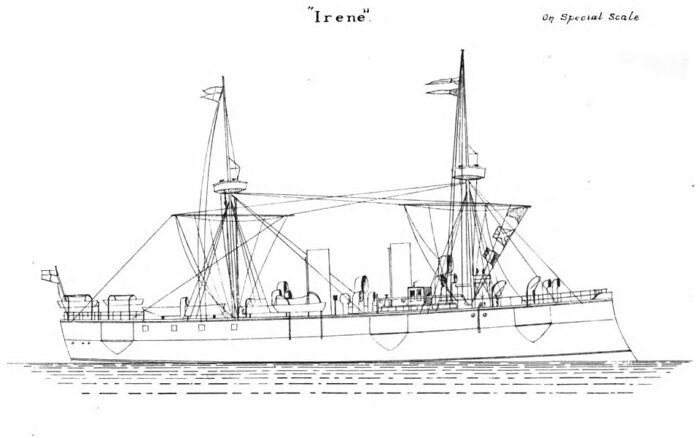
Irene, the predecessor class, as illustrated in Brassey’s 1888
Early German cruiser were already intended for overseas service or training, such as the screw corvettes of the Bismarck and Carola classes which only were glorified gunboats or the corvettes Nixe and Charlotte being only training vessels. In 1886, the two Irene-class protected cruisers were laid down and soon became a symbol, loosing their mast and with a powerful machinery and martial appearance, they became the first modern cruisers of the Kaiserliches Marine. So the admiralty debated on the next cruiser type to follow, and Vizeadmiral Alexander von Monts and VAdm Wilhelm von Wickede at the head of the Marinestation der Nordsee and Ostsee wanted a fleet of scouts. Caprivi, opposed them, supported by the Admiralty Council for a model designed first and foremost for overseas stations and an enhanced repeat of the Irene class with protection. Caprivi prefferred a commerce raiding approach, and for this, there was no need for armour.
The 1889 fiscal year which was approved in early 1888 saw these views also expressed in the Reichstag, which approved the construction of a single new cruiser called “H”. The design which was submitted had been worked out since May 1887. The driving force behind was Kapitän zur See Friedrich von Hollmann which made a consensus by arguing the new cruiser could fill all roles with some satisfactory level, believing this would be the first of a class of four. The speed and light protection were equally good for commerce raiding, overseas stations, and scouring for the fleet if needed. Some opposed the fact that a light protection would be an issue when dealing with coastal defences on foreign stations.
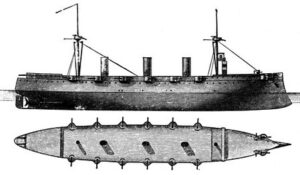 But Von Hollman assured that Krupp was working on a new, faster firing and longer range gun that could deal with any of these at a safe distance. Caprivi’s “station cruiser” view prevailed only until he resigned in July 1888 and when Kaiser Wilhelm II started to rule, he was influenced into thinking into a different approach until views diverged to such a point with Caprivi that the latter resigned, replaced by Monts which stopped design work and gave instruction to the design staff to revise the ship as a scout cruiser first.
But Von Hollman assured that Krupp was working on a new, faster firing and longer range gun that could deal with any of these at a safe distance. Caprivi’s “station cruiser” view prevailed only until he resigned in July 1888 and when Kaiser Wilhelm II started to rule, he was influenced into thinking into a different approach until views diverged to such a point with Caprivi that the latter resigned, replaced by Monts which stopped design work and gave instruction to the design staff to revise the ship as a scout cruiser first.
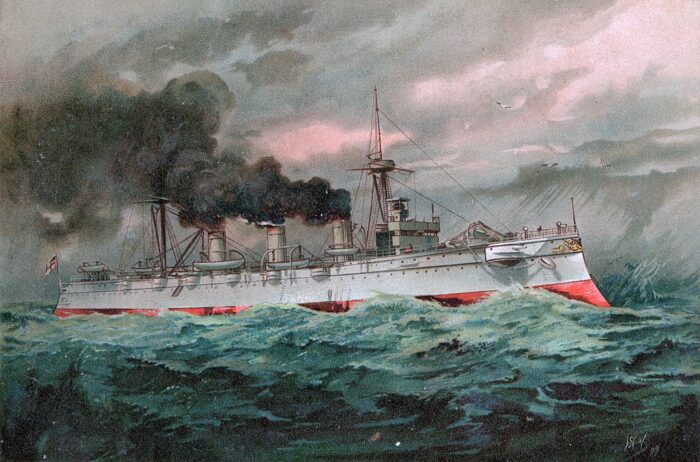
This final design was completed in 1889-90, the ship laid down later that year at Germaniawerft, Kiel. Construction was swift, in two years. Germany like Britain saw of paramount importance to have brand new and efficient naval yards, investing much into these, unlike France which cruisers could be built over as much as five to eight years.
Design of the class
Wilhelm II became personally invested in the design and reinstated armour protection, with a deck armour sufficient to deal with at least light cruiser and destroyer shells, and instructed chief Constructor Alfred Dietrich to also work out with a new hull for achieving much greater speeds, setting the mark to 20 knots (37 km/h; 23 mph), Compared to the Irene class’s 18 knots (33 km/h; 21 mph). For this, Dietrich’s engineers worked out experimental models tested in water, creating a much elongated hull compared to the Irenes, finer also with better ratio and improved hydrodynamic efficiency.
However, he took in account the size of existing dry docks and other infrastructure, so to set the maximal length possible. Higher speed however was traded for degraded agility, making her less efficient for close quarter fleet action, so it was decided to compensate to fit a much stronger and better distributed armament, delaying further the completion of the design and keel laying. Some described her as a stretched out Aviso “SMS Greif”.
Hull and general design
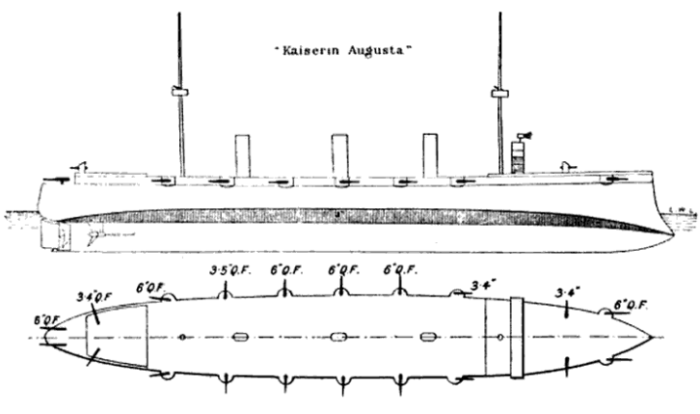
Kaiserin Augusta was indeed much larger than the Irene, at 122.2 meters (400 ft 11 in) long at the waterline and 123.2 m (404 ft 2 in) overall (versus 103.70 m/340 ft 3 in oa). Her beam was 15.6 m (51 ft 2 in) so slightly larger than the Irenes (14.20 m/46 ft 7 in)) for a greater draft at 6.48 m (21 ft 3 in) forward 7.4 m (24 ft 3 in) aft. Displacement as calculated was 6,056 metric tons (5,960 long tons), but on full combat load it rose to 6,318 t (6,218 long tons). This was 3,000 tonnes more than the Irene class, so a considerable increase, making her the largest cruiser in German inventory.
Her hull used classic construction technique, with a structure made of transverse and longitudinal steel frames. But it had an old-fashioned outer wall made of a single layer of timber planks, covered with Muntz metal sheathing to avoid fouling. The hull was subdivided below the waterline into ten watertight compartments, with a double bottom over 55 percent of the keel length. Like for the Irene class, the superstructure was austere, with a small conning tower and small bridge atop. Almost flush decked, she had an upper deck ending abruptly short of the stern, stepping down to a very small quarterdeck. The bare upper deck was fitted with hatches, three funnels, and their air vents, plus two pole masts with fighting tops. All this made for a very different silhouette than the Irenes, except they shared a ram bow with a decorated prow, but not a clipper style poop. Kaisereine Augusta’s poop was a proper cruiser’s poop, narrow and having less overhang, still just enough to cover most of the rudder.
Her crew was largely dictated by armament and more important than the Irenes, with 13 officers and 417 enlisted men (versus 28+337). She also carried several smaller boats like two picket boats, a launch, a pinnace, two cutters, two yawls, two dinghies to fill a large variety of roles, from coal barges to supply vessels and training or liaison. They could also be all used for a landing party, and there was a marine company on board and a large weapon’s hold to arm half of the crew.
Powerplant
Dietrich worked on the revised until late 1888, and found rapidly that outside the hull, the 20 knots setup was a difficult propulsion issue to solve. To achieve the desired top speed he calculated that with the weight heavier by 1/3 he needed 50% more horsepower compared to Irene. This was further exacerbated by a presence of an armour deck which complicated internal arrangement. Vertical engines to reach 20 knots on two shafts would protrude through the turtle deck and need an extra heavy glacis, making the displacement even greater, and requiring even more power. Discussions between engineers led quickly to adopt a three-shaft arrangement, provided they can fit in a slightly larger beam. It was theorized that if the power would be divided between three smaller engines they could fit in the existing structure. But this would be a world’s first.
Until then, all warships had been either single-shafters (ironclads) or twin-screwed vessels from the late 1870s and 1880s. Having three shafts was a completely new territory. It seems spying on France was also one factor, as i was reported that the French went through the same design thoughts for the armoured cruiser Dupuy de Lôme started earlier than Kaiserin Augusta. The latter would be completed first. Next was to improved handling characteristics. The arrangement was found very successful and repeated with the Kaiser Friedrich III-class battleships and then on further capital ships.
The final powerplant consisted of three 3-cylinder triple-expansion steam engines, built by AG Germania. They drove fixed pitch bronze four bladed propellers 4.5 m (14 ft 9 in) in diameter. There were also three separate engine room. To maintain the height of the planned deck armour, only the central engine was kept vertically, the outboard ones had to be placed horizontally to keep the sloped sides as they were. Steam came from eight cylindrical, double fire-tube boilers, also separated into three boiler rooms. These groups were ducted into their own funnel, each. In addition, there were four electrical generators rated for 48 kilowatts at 67 volts powering man systems and internal lighting when the engines were cold at anchor. Steering relied on a single rudder however, which was of course powered by steam.
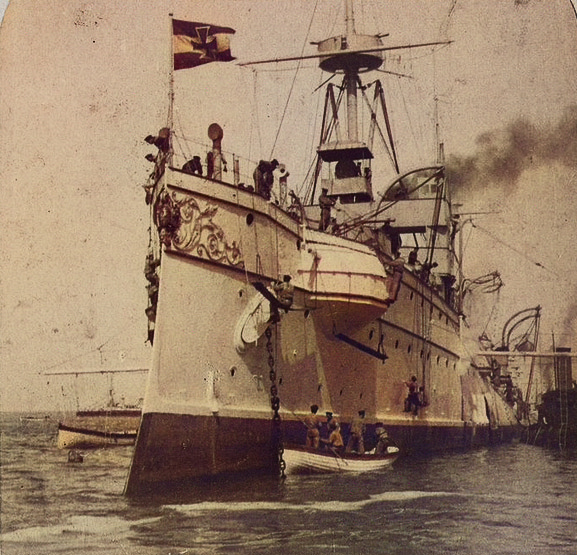
Extract of a New York setereoscopic photo, colorized by AI
These engines made for a total output of 12,000 metric horsepower (11,840 ihp) and top speed of 21 knots (39 km/h; 24 mph). On trials, Kaiserin Augusta reached 14,015 PS (13,823 ihp) over a 6-hour test. Figures for force draft test disappeared from records, but some authors guessed it was around 22.5 knots (41.7 km/h; 25.9 mph) with the official recorded speed being 21.5 knots. This made her one of the fastest cruisers in the world, the pride of Kaiser Wilhelm. She was also the fastest ship in the German fleet, able to outrun a destroyer, perfectly suited for her scouting role. For autonomy, coal storage was 700 t (690 long tons; 770 short tons) and on a cruising speed of 12 knots (22 km/h; 14 mph) she could reach 3,240 nautical miles (6,000 km; 3,730 mi) which was a bit better than the Irenes. An extra 110 t (110 long tons; 120 short tons) of coal could be stuffed in some void compartments without affecting stability, and extend this in wartime.
However, tests also revealed the cruiser, perhaps not surprisingly given her hull ratio, suffered from severe pitch and roll, and that her forecastle was very wet in a head sea. She manoeuvred poorly as well, albeit it improved at high speed. The transverse metacentric height was 0.78 m (2 ft 7 in). Her three shafts arrangement had an unforeseen effect, as she also vibrated excessively at high speeds. So much, the officers jokingly referred to her as the “cocktail shaker”. It was theorized it was due to their propeller shafts placed too close to the hull. Later refits helped to partially solve the issue.
Protection
The “poor child” in the usual trio. Kaiserin Augusta was supposed to be better protected than the Irenes for fleet duties, at least protected against destroyer rounds as she was likely a vanguard of the fleet, likely encountering them. She had a classic curved armour deck, made of Krupp steel, sloping downward on both sides, to meet the hull over 1.5 m (4 ft 11 in) below the waterline. The flat portion was 50 mm (2 in) thick and the slopes increased to 75 mm (3 in) on the sides, covering the propulsion machinery spaces. These were reduced to 50 mm further forward and aft.
This turtle deck at the bow, ending in a point that in fact reinforced the ram, enabling that kinds of attacks. The conning tower had walls 50 mm thick and was covered by a 20 mm (0.79 in) thick roof. It was very minimalistic and cramped inside with just enough room for a steering wheel for the helmsman and a few officers, a few indicators and voice pipes. The same were repeated on the standard bridge above, with wooden panelling.
Below the conning tower, there was a communication tube down to the protected deck, made of 100 mm (3.9 in) steel. It protected the steering gear leads and voice tubes relaying commands. The 8.8 cm guns also had 12 mm (0.47 in) gun shields.
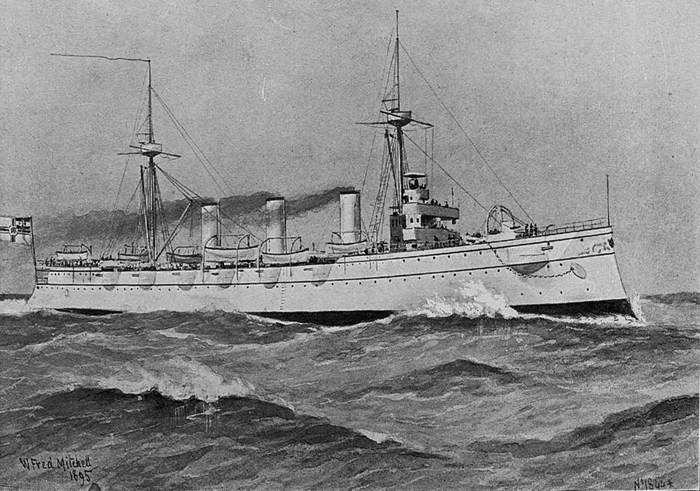
Armament

The armament was also a headache in the design phase, generating a lot of debates. The naval command initially rejected 15 cm (5.9 in) RK L/30 guns that were deemed unable to pierce deck armour, but Krupp in between developed new quick-firing guns of the 10.5 cm (4.1 in) calibre and this led to the adoption of twelve 10.5 cm SK L/35 guns. Speed was preferred above all else. This arrangement guaranteed twice as much firepower as fewer, slower 15 cm guns. The goal was to concentrate on unarmoured sections of enemy ships instead. But as the ships became larger, it was now possible again to revert to the slower 15 cm guns and in 1891, Krupp proposed the faster-firing harder-hitting 15 cm SK L/35 guns so Dietrich modified the design for these, reinforcing the decks and supports. Since they were brand new, they were not enough to equip Kaiserin Augusta when completed, so she mixed new 15 cm and older 10.5 cm guns as a compromise.
15 cm Ring Kanone L/30
It was developed from 1883 by Krupp as a dual purpose naval gun and coastal artillery piece, later also used on the front in WW1. The Ring Kanone L/30 was a built-up gun constructed of steel with central rifled tube and reinforcing layers of hoops plus trunnions. It had a cylinder-prismatic breech, predecessor of Krupp’s horizontal sliding-block. Separate-loading, bagged charges and shells, with a recoil handled by a brake system. For this initial battery, located in pairs for and aft in sponsoned casemates, they had 292 rounds of ammunition.
Specs:
10 t (9.8 long tons; 11 short tons), barrel 4.47 m (14 ft 8 in) L/30
Shell: 40 kg (88 lb) Separate-loading, bagged charges and projectiles, exact cal. 149.1 mm (5.87 in)
MV 609 m/s (2,000 ft/s)
Horizontal sliding-block breech, +35° elevation, range 12.1 km (7.5 mi).
10.5 cm SK L/35
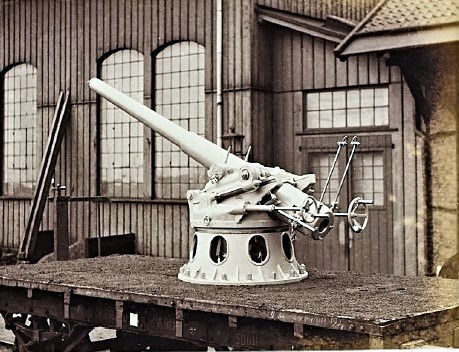
The 10.5 cm SK L/35 (SK – for “Schnelladekanone”, quick-loading cannon) and L for Länge, long of 35-caliber. Developed from 1891, used by many ships also by the Ottoman, Royal Netherlands Navy, and Spanish Navy. Production started in 1894 after Kaiserin Augusta was completed. In time, long barrels were developed that equipped scores of German cruisers. These eight guns on Kaiserin Augusta were located behind shields on the broadsides in sponsoned casemates. They were provided with 777 rounds of ammunition.
Specs:
Mass: 1,270 kg (2,800 lb) length 3.6 m (11 ft 10 in) barrel 3.4 m (11 ft 2 in)
Calibre 105 millimetres (4.1 in) with an Horizontal sliding-wedge breech
Elevation -10° to +30°, 7.5 rpm, MV 600 m/s (2,000 ft/s), range 12 km (7.5 mi).
8.8 cm SK L/30 naval gun (3.5 in)
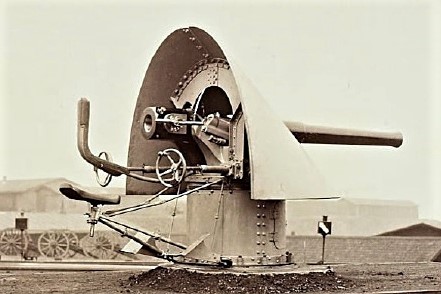
The go-to light gun of the German Navy. Generally shielded, designed in 1890 and widespread in the Navy. It was developed as anti-torpedo boat gun, and quite lethal due to its caliber unlike entente’s usual Hotchkiss 37-47-57 mm trio. They were placed on the deck, hence the shields, with 1,361 rounds of ammunition. There were also four extra machine guns that can be dismounted and used for landing parties.
Specs:
Mass: 644 kilograms (1,420 lb), 2.64 meters (8 ft 8 in) long
Shell: fixed (unitary) HE or AP 7 kilograms (15 lb)
Breech: horizontal sliding-wedge for 15 rpm, MV 590 m/s (1,900 ft/s)
Elevation C/89: -10° to +20° for 7,300 metres (8,000 yd).
Torpedo Tubes
35 cm (13.8 inches) Schwartzkopf models derived from Fiume’s Whitehead Mark I. The original was 12 inches in diameter.
The Empress Augusta carried them in a lozenge pattern, two pairs on the broadside in swivel mounts, so capable of certain angles, and a single one in the prow. 13 torpedoes were in store. Later in 1907 the swivel mount tubes were removed, the bow tube kept with just two spare torpedoes.
Updates
In 1893–1895, a refit to correct construction issues saw her armament updated with a uniform battery of twelve 15 cm SK L/35 guns with much better range of 12,600 m (41,300 ft) supplied with a total of 1,064 shells and still placed in casemates along the hull.

Prior to 1900, old profile (pinterest)

Kaiserin Augusta after refit in 1900 (the blueprints)
⚙ Kaiserin Augusta’s specifications |
|
| Displacement | 6,056 t (5,960 long tons), 6,318 t (6,218 long tons) FL |
| Dimensions | 123.2 x 15.6 x 6.48m (404 x 51 x 21.3 ft) |
| Propulsion | 3 shafts VTE, 8 × fire-tube boiler: 12,000 PS (8,800 kW) |
| Speed | 21 knots (38.9 km/h) |
| Range | 3,240 nmi (6,000 km; 3,730 mi) at 12 kn (22 km/h; 14 mph) |
| Armament | 4× 15 cm/30, 8× 10.5 cm/35, 8× 8.8 cm/30 guns, 4× LMG, 5× 35 cm TTs |
| Protection | Deck 50-70 mm (2.0 to 2.8 in), CT 50 mm |
| Crew | 13 officers, 417 enlisted men |
Career of SMS Augusta

Kaiserin Augusta’s keel was laid down at Germaniawerft, Kiel in May 1890, launched on 15 January 1892 in a ceremony where she was christened by Prince Heinrich of Prussia, grandson of the namesake, Empress Augusta. Completed with her provisional armament and commissioned she started sea trials on 17 November, interrupted by the need to send her to the US for the celebration of Christopher Columbus’s discovery as earlier in Genoa, SMS Prinzess Wilhelm was presented and attracted bad press. She arrived in NYC by early 1893 for ceremonies under command of KzS Wilhelm Büchsel with Seeadler coming from Halifax, as Kaiserin Augusta took her in tow since she ran out of coal. They arrived at Hampton Roads on 26 April. There she made her show, making in front of the public a speed run at 21.5 knots (39.8 km/h; 24.7 mph) after crossing the Atlantic. She then sailed to New York and left for home on 13 May while Seeadler returned to German East Africa. Kaiserin Augusta made another high speed run to Kiel on 2 June.
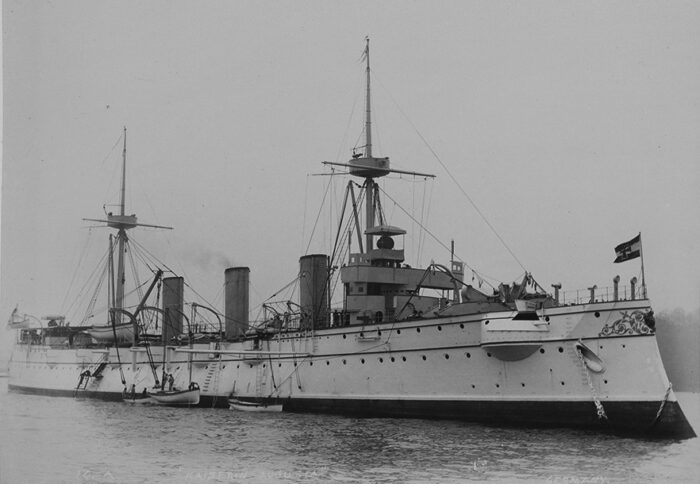
But this revealed severe vibrations and structural problems. She was decommissioned for modifications on 21 June, and her armament completely modified by mid-1894. During her post-refit sea trials her engines broke down, and she returned in dry-dock to have them rebuilt completely until early 1895. She was recommissioned on 3 April, made more trials and on 9 May, accidentally ran aground in the Kieler Förde. Pulled free by SMS Baden and tugboats, repaired, she took part in the opening ceremonies for the Kaiser Wilhelm Canal, on 21 June, leading a parade of twenty-one unarmoured ships.
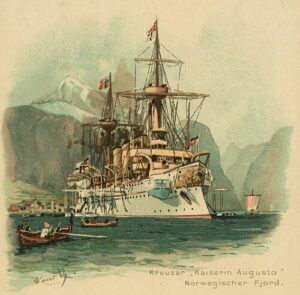 When two German merchants were murdered in Morocco, SMS Irene was sent to flex muscles, but the German government decided the amount Morocco agreed to pay was insufficient and by July, Kaiserin Augusta under command of KzS Oscar von Schuckmann departed with the steam corvettes Marie and Stosch and coastal defence ship Hagen in a Squadron she led, the latter ships was on a training cruise in the Mediterranean. They arrived to pressure the Moroccan government, with Schuckmann taking part in the negotiations in Tangier with the German ambassador. This gunboat diplomacy paid off, but this “extortion” was heavily criticized from London. There, anti-German sentiment started to rise. Kaiserin Augusta left Tangier on 5 August, back in Kiel on the 18th for the annual fleet manoeuvres. On 20 December at last her sea trials were completed, and she became a guard ship in Wilhelmshaven, soon doubling as a training vessel for engine room personnel. From 10 March 1896 she escorted Wilhelm II’s yacht Hohenzollern in his Mediterranean cruise until 1 May. From June to 8 November, she was in squadron training exercises.
When two German merchants were murdered in Morocco, SMS Irene was sent to flex muscles, but the German government decided the amount Morocco agreed to pay was insufficient and by July, Kaiserin Augusta under command of KzS Oscar von Schuckmann departed with the steam corvettes Marie and Stosch and coastal defence ship Hagen in a Squadron she led, the latter ships was on a training cruise in the Mediterranean. They arrived to pressure the Moroccan government, with Schuckmann taking part in the negotiations in Tangier with the German ambassador. This gunboat diplomacy paid off, but this “extortion” was heavily criticized from London. There, anti-German sentiment started to rise. Kaiserin Augusta left Tangier on 5 August, back in Kiel on the 18th for the annual fleet manoeuvres. On 20 December at last her sea trials were completed, and she became a guard ship in Wilhelmshaven, soon doubling as a training vessel for engine room personnel. From 10 March 1896 she escorted Wilhelm II’s yacht Hohenzollern in his Mediterranean cruise until 1 May. From June to 8 November, she was in squadron training exercises.
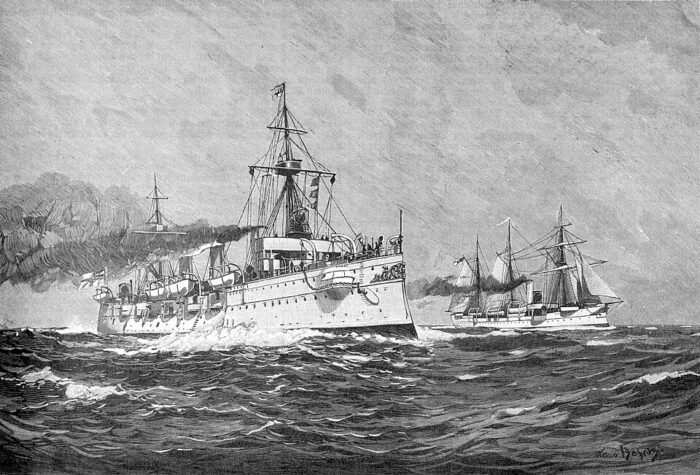
In February 1897, she departed for the international naval demonstration off Crete (Greek insurgency) to prevent another Greco-Turkish war. She became the only German contribution to the Squadron, arriving in Souda Bay on 21 February under Korvettenkapitän Leopold Koellner. She shelled Greek volunteers attacking Chania on 21 February. On 15 March, she contributed by 50 men to the landing party ashore to stop the fighting. Despite her size she was put into the “Light Division” with the Italian torpedo cruiser Caprera, Austro-Hungarian cruiser Tiger, French destroyer Faucon, Russian gunboat Grosjaschtschi, tasked with stopping Greek attacks around Souda Bay. The Greek volunteers soon nicknamed her “the damned white ship”, as she was the most imposing of the force.

This fail though as the Greco-Turkish War of 1897 broke out on 17 April. Kaiserin Augusta and the remainder of the squadron sailed to Piraeus and on 8 November, to Smyrna to receive orders. She was reassigned to East Asia after returning to Crete on 19 November to retrieve her landing party. Indeed, after the seizure of Jiaozhou Bay as a Leased Territory, Admiral Otto von Diederichs (East Asia Squadron) asked for reinforcements to secure this enclave and specifically asked for Kaiserin Augusta plus troops to garrison the port. She was joined underway by Deutschland and Gefion with the III Seebataillon on board and SMS Cormoran. She arrived first on 30 December, remained in Qingdao until mid-March 1898, when and departed to visit Hong Kong.
Likewise, she started a cruise in the Yellow Sea, visited Nagasaki, until taken in command by KzS Ernst Gülich. As the Spanish–American War flared up in 1898 she was asked to sail to the Philippines, after the victory of George Dewey over Patricio Montojo. Her role was to protect local German interests, and if possible, seize a colonial concession there. She became flagship of a small force, and after the Battle of Manila, was in Hong Kong on 15 August, notifying Berlin of the events and carrying the former Governor General of the Philippines, Basilio Augustín.
In October, she carried infantry to Taku as asked by the German ambassador to China. They traveled overland to Beijing, guarding the German legation. On 23 November she took par tin the ceremony for the Iltis monument in Shanghai. Back to Qingdao she then toured Chinese-Japanese waters. On 27 February 1899 she was reclassed as a “Grosser Kreuzer” (Large Cruiser). By October, she sailed for an overhaul at Weihaiwei until 5 February 1900. By late March with the Boxer Uprising she departed to the Taku forts, landing men from III Seebataillon and booted this by her own party of 60 men to assist with Admiral Edward Seymour’s relief force to Tientsin. KK Oltmann was killed in battle there. On 18 July the landing party was partly back, some remained ashore until mid-September.
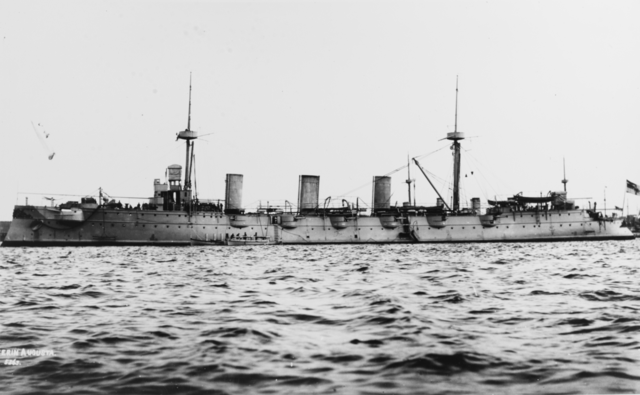
She was squadron flagship under VAdm. Emil Felix von Bendemann from 26 October to 18 November since Fürst Bismarck was in refit. Fregattenkapitän Johannes Stein took command from January to November 1901, then FK Friedrich von Ingenohl (yes, this one), until March 1902, then KzS Carl Derzewski. On 6 March 1902 she was called back home, escorted by the torpedo boats S91 and S92, reaching Kiel on 7 June, to be decommissioned the 16th.
Placed into dry-dock for an extensive modernization from May 1903 she received new generators doubling electrical output, at 124 kW/110 V, had an expanded bridge and second deck extending aft of the foremast, had her three funnels raised by 2 m (6 ft 7 in), one searchlight installed on each topmast. The swivel torpedo tubes were removed. By late 1905 she was placed in reserve, until 1914. In July she was reactivated as a gunnery training ship replacing SMS Blücher, impressed into the High Seas Fleet. From August to November she was under KzS Ferdinand Bertram, stationed in the Baltic, coastal defence division, with possible intervention if the RN tried to reach the Danish straits (Skagerrak).
Her armament was revised and much diversified. By late 1914, she left the coastal defence division and remained safe in the western Baltic until 1918. More alterations were made to her armament so by the end she had one 15 cm SK L/45 gun, four 10.5 cm SK L/45 guns, four 8.8 cm (3.46 in) SK L/45 guns, four 8.8 cm SK L/35 guns, five 8.8 cm SK L/30 guns, and one 8.8 cm SK L/30 gun in a U-boat mounting. She was decommissioned 14 December 1918, formally stricken on 1 October 1919 sold for BU to Norddeutsche Tiefbauges, Berlin, BU in Kiel-Nordmole.
Read More/Src
Books
Campbell, N. J. M. & Sieche, Erwin (1986). “Germany”. In Gardiner, Robert & Gray, Randal (eds.). Conway’s All the World’s Fighting Ships 1906–1921.
Dodson, Aidan (2016). The Kaiser’s Battlefleet: German Capital Ships 1871–1918. Barnsley: Seaforth Publishing.
Gröner, Erich (1990). German Warships: 1815–1945. Vol. I: Major Surface Vessels. Annapolis: Naval Institute Press.
Gottschall, Terrell D. (2003). By Order of the Kaiser: Otto von Diederichs and the Rise of the Imperial German Navy, 1865–1902. NIP
Hildebrand, Hans H.; Röhr, Albert & Steinmetz, Hans-Otto (1993). Die Deutschen Kriegsschiffe: Biographien – ein Spiegel der Marinegeschichte von 1815 bis zur Gegenwart. Ratingen: Mundus Verlag
Nottelmann, Dirk (2023). Wright, Christopher C. (ed.). “From “Wooden Walls” to “New-Testament Ships”: The Development of the German Armored Cruiser 1854–1918, Part III. Warship International.
Oldknow, R. C. (1893). Brassey, Thomas A. (ed.). “Marine Engineering”. Brassey’s Annual. Portsmouth: J. Griffin and Co.
Sondhaus, Lawrence (1997). Preparing for Weltpolitik: German Sea Power Before the Tirpitz Era. NIP
Weyl, E. (1893). Brassey, Thomas A. (ed.). “Progress of Foreign Navies”. Brassey’s Annual. Portsmouth: J. Griffin and Co.
Links
https://en.wikipedia.org/wiki/SMS_Kaiserin_Augusta
https://de.wikipedia.org/wiki/Kaiserin_Augusta
Gallery
Model Kits
None but book “Die großen Kreuzer, Kaiserin Augusta bis Blücher” by Gerhard Koop, Klaus-Peter Schmolke.
3D
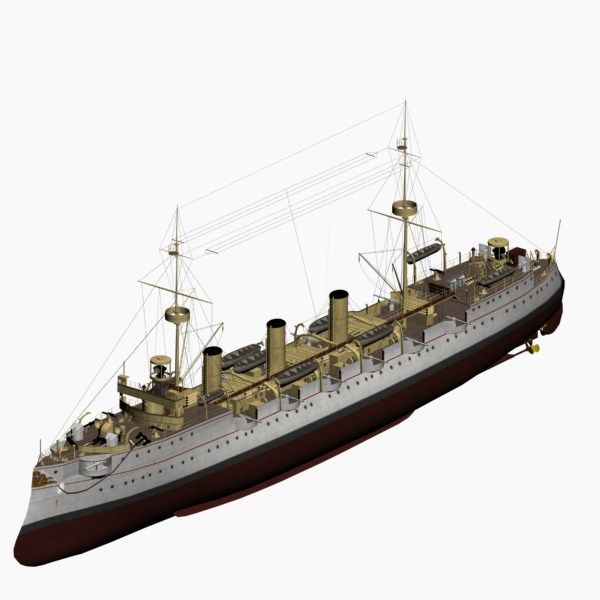
Empress Augusta in 3D src See also on turbosquid.com/

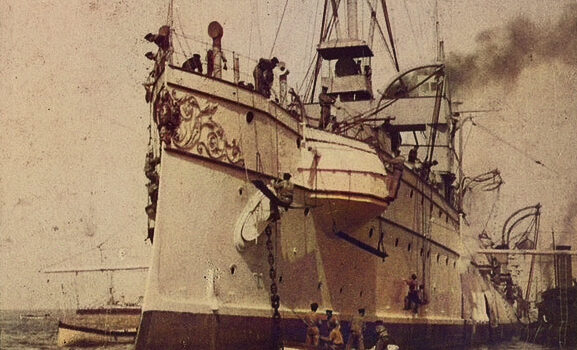
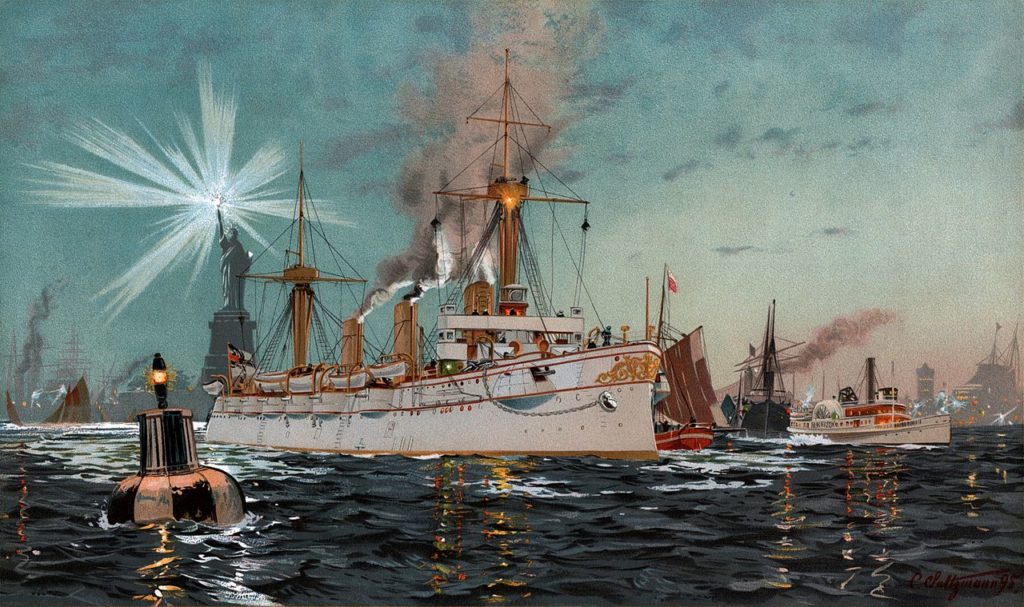
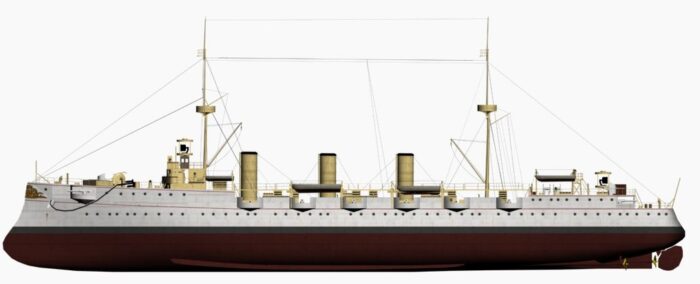
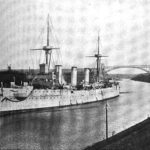
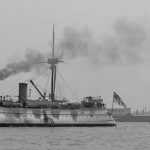
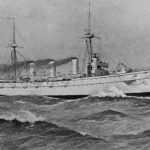
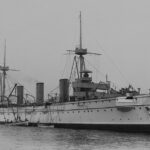
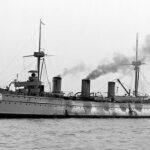
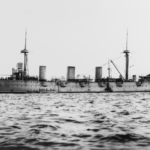
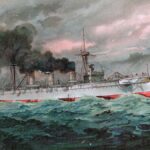
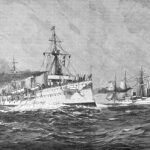
 Latest Facebook Entry -
Latest Facebook Entry -  X(Tweeter) Naval Encyclopedia's deck archive
X(Tweeter) Naval Encyclopedia's deck archive Instagram (@navalencyc)
Instagram (@navalencyc)





 French Navy
French Navy Royal Navy
Royal Navy Russian Navy
Russian Navy Armada Espanola
Armada Espanola Austrian Navy
Austrian Navy K.u.K. Kriegsmarine
K.u.K. Kriegsmarine Dansk Marine
Dansk Marine Nautiko Hellenon
Nautiko Hellenon Koninklije Marine 1870
Koninklije Marine 1870 Marinha do Brasil
Marinha do Brasil Osmanlı Donanması
Osmanlı Donanması Marina Do Peru
Marina Do Peru Marinha do Portugal
Marinha do Portugal Regia Marina 1870
Regia Marina 1870 Nihhon Kaigun 1870
Nihhon Kaigun 1870 Preußische Marine 1870
Preußische Marine 1870 Russkiy Flot 1870
Russkiy Flot 1870 Svenska marinen
Svenska marinen Søværnet
Søværnet Union Navy
Union Navy Confederate Navy
Confederate Navy Armada de Argentina
Armada de Argentina Imperial Chinese Navy
Imperial Chinese Navy Marinha do Portugal
Marinha do Portugal Mexico
Mexico Kaiserliche Marine
Kaiserliche Marine 1898 US Navy
1898 US Navy Sovietskiy Flot
Sovietskiy Flot Royal Canadian Navy
Royal Canadian Navy Royal Australian Navy
Royal Australian Navy RNZN Fleet
RNZN Fleet Chinese Navy 1937
Chinese Navy 1937 Kriegsmarine
Kriegsmarine Chilean Navy
Chilean Navy Danish Navy
Danish Navy Finnish Navy
Finnish Navy Hellenic Navy
Hellenic Navy Polish Navy
Polish Navy Romanian Navy
Romanian Navy Turkish Navy
Turkish Navy Royal Yugoslav Navy
Royal Yugoslav Navy Royal Thai Navy
Royal Thai Navy Minor Navies
Minor Navies Albania
Albania Austria
Austria Belgium
Belgium Columbia
Columbia Costa Rica
Costa Rica Cuba
Cuba Czechoslovakia
Czechoslovakia Dominican Republic
Dominican Republic Haiti
Haiti Hungary
Hungary Honduras
Honduras Estonia
Estonia Iceland
Iceland Eire
Eire Equador
Equador Iran
Iran Iraq
Iraq Latvia
Latvia Liberia
Liberia Lithuania
Lithuania Mandchukuo
Mandchukuo Morocco
Morocco Nicaragua
Nicaragua Persia
Persia San Salvador
San Salvador Sarawak
Sarawak Uruguay
Uruguay Venezuela
Venezuela Zanzibar
Zanzibar Warsaw Pact Navies
Warsaw Pact Navies Bulgaria
Bulgaria Hungary
Hungary

 Bundesmarine
Bundesmarine Dutch Navy
Dutch Navy Hellenic Navy
Hellenic Navy Marina Militare
Marina Militare Yugoslav Navy
Yugoslav Navy Chinese Navy
Chinese Navy Indian Navy
Indian Navy Indonesian Navy
Indonesian Navy JMSDF
JMSDF North Korean Navy
North Korean Navy Pakistani Navy
Pakistani Navy Philippines Navy
Philippines Navy ROKN
ROKN Rep. of Singapore Navy
Rep. of Singapore Navy Taiwanese Navy
Taiwanese Navy IDF Navy
IDF Navy Saudi Navy
Saudi Navy Royal New Zealand Navy
Royal New Zealand Navy Egyptian Navy
Egyptian Navy South African Navy
South African Navy






























 Ukrainian Navy
Ukrainian Navy dbodesign
dbodesign